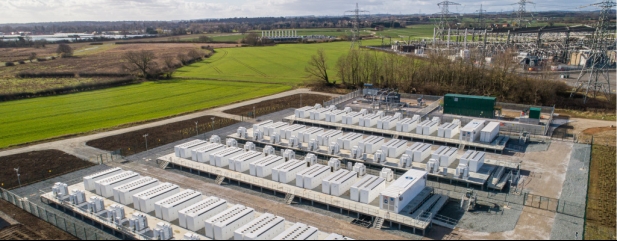Archived article
Please note that tax, investment, pension and ISA rules can change and the information and any views contained in this article may now be inaccurate.
Harmony Energy Income Trust is a battery play with real dividend appeal

If the world is going to make the transition from fossil fuels to renewables, then batteries and battery technology are going to play an important part.
Harmony Energy Income Trust (HEIT) is an attractive way to play this long-term theme while also offering a generous income in the here and now.

At present just one of the firm’s battery assets is operational, the 98 MW (megawatt) Pillswood project in Yorkshire, the largest of its kind in Europe.
However, its Broadditch asset in Kent is set to become operational in the next few weeks, and as more come on stream over the next 18 months to two years, we would expect the trust’s valuation to grow. Harmony currently trades at a 1.2% discount to net asset value and offers a prospective yield of 6.5%. Dividends are paid quarterly. The ongoing charge is 1.28%.
Some people may be under the illusion batteries are located on site at a wind or solar farm and store energy from the relevant panels or turbines. There are what are called ‘co-located assets’, and some are in the trust’s own pipeline, but most batteries are just connected directly to the grid and are used to help balance supply and demand for the network operator, National Grid (NG.).
It is these connections, of which Harmony has several, which are its real competitive advantage and a genuine barrier to entry given, as manager Paul Mason observes, if you were applying for grid connections with National Grid now ‘you’re not going to get anything this side of 2030’.
This mitigates any concern about developments in battery technology rendering any of Harmony’s assets obsolete as the connections to the grid will always be valuable. And, in any case, as it stands Harmony has a technological advantage given all of its batteries have two-hour duration, where many others have just one.
Harmony makes money in three ways. Ancillary services (selling energy from batteries through short-term contracts), capacity market (an insurance policy on the part of the grid to protect against blackouts) and arbitrage. It is in the latter where the extra duration of its batteries really pays off. Buying power cheaply overnight to store and selling it at peak times in the evening, Harmony’s two-hour duration means it has twice as much power to trade with.
Slade adds the development of batteries is running behind that of renewables which should result in attractive market dynamics for the trust. It also benefits from access to an extended pipeline of assets being progressed by Harmony Energy Limited, a battery, solar and wind farm developer with whom the trust has an exclusive right of first refusal.
Important information:
These articles are provided by Shares magazine which is published by AJ Bell Media, a part of AJ Bell. Shares is not written by AJ Bell.
Shares is provided for your general information and use and is not a personal recommendation to invest. It is not intended to be relied upon by you in making or not making any investment decisions. The investments referred to in these articles will not be suitable for all investors. If in doubt please seek appropriate independent financial advice.
Investors acting on the information in these articles do so at their own risk and AJ Bell Media and its staff do not accept liability for losses suffered by investors as a result of their investment decisions.
Issue contents
Editor's View
Feature
Great Ideas
News
- Aston Martin shares jump the gun in rush for profitable growth
- China’s new 5% growth target underwhelms as its focus shifts to boosting consumption
- Fresnillo suffers as costs surge and precious metals lose some shine
- Shaftesbury focused on income growth and cost cutting as it completes Capco merger
- ASOS shares gain 80% year-to-date on growing turnaround hopes
 magazine
magazine








